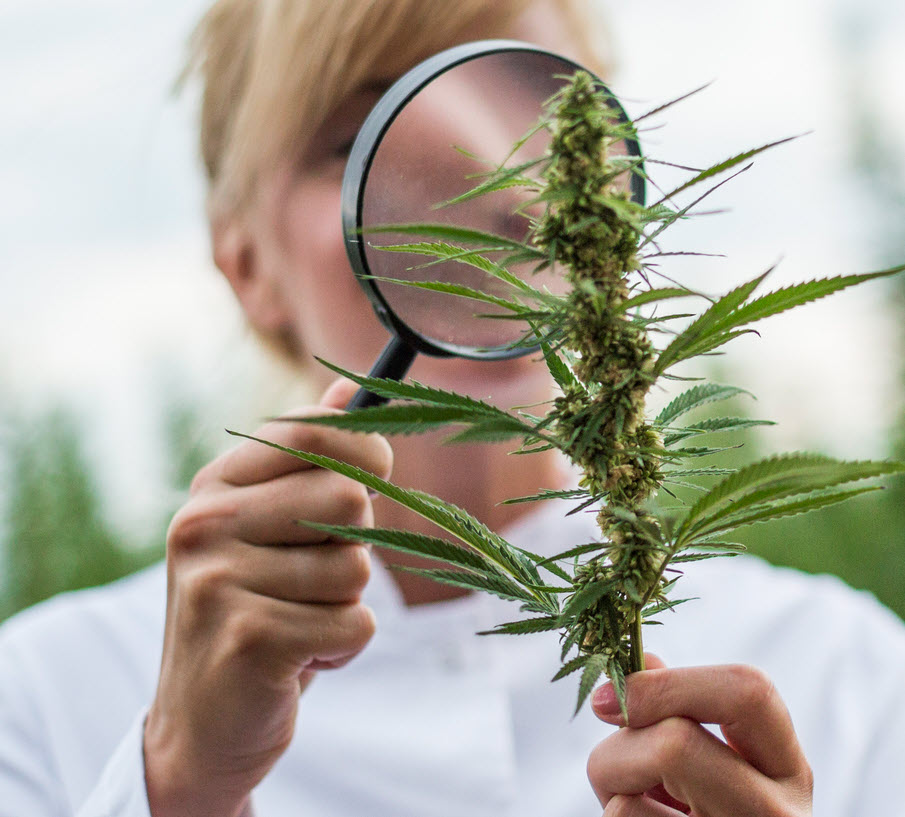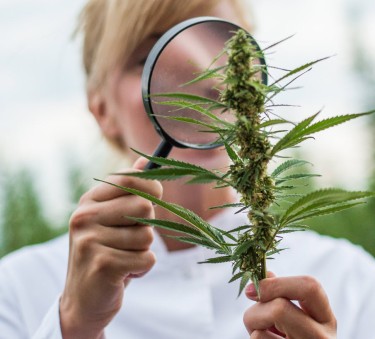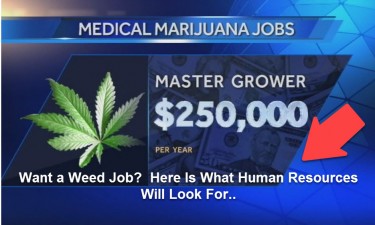Cannabis News
Legal Considerations and Compliance for Indoor Cannabis Growers » How to Grow Weed Indoors
Published
9 months agoon
By
admin
In recent years, the cannabis industry has experienced a remarkable transformation, with the legalization of cannabis for medical and recreational use in various jurisdictions, Legal Considerations and Compliance for Indoor Cannabis Growers has become very important.
This shift has spurred a surge in indoor cannabis cultivation, as growers seek to meet the demand for high-quality products. However, the journey into indoor cannabis cultivation comes with a myriad of legal considerations and compliance requirements that growers must navigate to operate legally and sustainably.
In this comprehensive guide, we delve into the crucial legal aspects and compliance measures that indoor cannabis growers need to understand and adhere to in order to thrive in this burgeoning industry.
Understanding Legal Frameworks:
Before embarking on indoor cannabis cultivation, growers must familiarize themselves with the legal frameworks governing cannabis at both the federal and state levels. While cannabis remains illegal under federal law in many countries, including the United States, several states and jurisdictions have legalized its use for medical and/or recreational purposes.
It’s essential for growers to stay informed about the specific regulations and licensing requirements in their jurisdiction, as they can vary significantly from one location to another. This includes obtaining the necessary permits and licenses to cultivate cannabis legally, as well as adhering to zoning regulations and building codes related to indoor cultivation facilities.
Compliance with Licensing and Permitting:
Securing the appropriate licenses and permits is a foundational step for indoor cannabis growers to operate legally. Depending on the jurisdiction, growers may need to obtain licenses for cultivation, processing, distribution, and retail, among others. These licenses often come with stringent requirements and application processes, which may include background checks, security measures, and compliance with certain operational standards.
Failure to obtain the necessary licenses and permits can result in severe legal consequences, including fines, closure of operations, and even criminal charges. Therefore, growers must ensure full compliance with licensing and permitting requirements to avoid any legal entanglements.
Environmental Regulations and Sustainability:
Indoor cannabis cultivation presents unique environmental challenges, including energy consumption, water usage, and waste management. As such, growers must be mindful of environmental regulations and implement sustainable practices to minimize their ecological footprint.
Energy consumption is a significant concern for indoor cultivation facilities, as the use of artificial lighting, HVAC systems, and other equipment can contribute to high electricity usage. Implementing energy-efficient technologies, such as LED lighting and advanced climate control systems, can help reduce energy consumption and lower operational costs while mitigating environmental impact.
Water usage is another critical consideration, especially in regions prone to drought or water scarcity. Growers should prioritize water conservation measures, such as efficient irrigation systems, recycling runoff water, and capturing rainwater where feasible.
Additionally, proper waste management is essential to minimize environmental pollution and comply with regulations. This includes proper disposal of plant waste, recycling of packaging materials, and compliance with hazardous waste regulations for chemicals and fertilizers used in cultivation.
Labor and Employment Laws:
Indoor cannabis cultivation operations require a workforce to manage various aspects of production, from cultivation and harvesting to processing and packaging. As such, growers must adhere to labor and employment laws to ensure fair treatment of workers and compliance with labor regulations.
This includes providing a safe working environment, complying with minimum wage and overtime regulations, and adhering to anti-discrimination laws in hiring and employment practices. Growers should also be aware of any specific regulations or union requirements that may apply to cannabis cultivation workers in their jurisdiction.
Product Safety and Quality Assurance:
Ensuring the safety and quality of cannabis products is paramount for compliance and consumer satisfaction. Growers must adhere to strict quality assurance protocols throughout the cultivation and processing stages to prevent contamination, ensure potency and purity, and comply with labeling requirements.
This includes implementing Good Manufacturing Practices (GMP) and Hazard Analysis and Critical Control Points (HACCP) protocols to maintain product integrity and safety. Growers should also regularly test cannabis products for potency, pesticides, heavy metals, and microbial contaminants to ensure compliance with regulatory standards and consumer expectations.
Conclusion:
Indoor cannabis cultivation offers tremendous opportunities for growers to participate in a rapidly growing industry. However, success in this field requires a thorough understanding of the legal considerations and compliance requirements that govern cannabis cultivation.
By staying informed about applicable regulations, obtaining the necessary licenses and permits, implementing sustainable practices, and prioritizing product safety and quality, indoor cannabis growers can navigate the complex legal landscape and position themselves for long-term success in the burgeoning cannabis market.
Please Share This Important Article
You may like
Cannabis News
Who are the Next 5 States to Legalize Recreational or Medical Cannabis Starting in 2025?
Published
5 hours agoon
January 31, 2025By
admin

As the landscape of marijuana legalization continues to evolve across the United States, 2025 is shaping up to be a pivotal year for states considering reforms. Advocacy groups are closely monitoring legislative developments and public sentiment, identifying specific states that are likely to make significant strides toward legalization. This article explores the states most likely to legalize marijuana in 2025, examining the political climate, public opinion, and advocacy efforts that may influence these changes.
The Current State of Marijuana Legalization in the U.S.
As of 2023, a growing number of states have legalized marijuana for both medical and recreational use. According to the National Conference of State Legislatures (NCSL), 21 states and Washington D.C. have legalized recreational marijuana, while 37 states allow medical marijuana use. This rapid expansion reflects changing public attitudes toward cannabis, which have shifted dramatically over the past two decades.
Public Opinion Trends
Public support for marijuana legalization has reached unprecedented levels. A Gallup poll conducted in late 2022 found that 68% of Americans support legalizing marijuana, a significant increase from just 25% in 1995. This shift in public opinion is crucial for lawmakers as they consider new legislation. Advocacy groups are leveraging this support to push for reforms in states where legalization has yet to occur.
The Role of Advocacy Groups
Organizations such as the National Organization for the Reform of Marijuana Laws (NORML) and the Marijuana Policy Project (MPP) play a vital role in advocating for legalization. They provide research, mobilize grassroots campaigns, and lobby lawmakers to promote cannabis reform. Their insights into which states are most likely to legalize in 2025 are based on legislative trends, political dynamics, and public sentiment.
Key States Likely to Legalize Marijuana in 2025
Pennsylvania has emerged as a strong contender for marijuana legalization in 2025. The state has a robust medical marijuana program established in 2016 that has seen significant success, with over 600,000 registered patients. However, advocates argue that the time has come to expand access to adult-use cannabis.
Political Support
The recent election of Governor Josh Shapiro has energized legalization efforts. Shapiro has expressed support for legalizing recreational marijuana and has indicated a willingness to work with lawmakers across party lines. In early 2025, a bipartisan bill is expected to be introduced that aims to create a regulated market for adult-use cannabis.
Advocacy Efforts
Advocacy groups are actively mobilizing support among residents and lawmakers alike. Campaigns highlighting the potential economic benefits—such as job creation and tax revenue—are gaining traction. Additionally, public polls indicate strong support among Pennsylvanians for legalization, further bolstering advocacy efforts.
Hawaii has long been known for its progressive stance on cannabis; it was one of the first states to legalize medical marijuana in 2000. However, efforts to legalize recreational use have stalled in previous legislative sessions.
Current Developments
In 2025, advocates are optimistic about renewed efforts to pass comprehensive cannabis legislation. The Senate previously approved a bill aimed at legalizing recreational use, but it failed in the House due to opposition from conservative lawmakers.
Political Dynamics
The political landscape appears more favorable this year with new leadership in the House that may be more open to discussing cannabis reform. Governor Josh Green has also expressed support for legalization, emphasizing its potential economic benefits for Hawaii’s tourism-driven economy.
Advocacy Strategies
Advocacy groups are focusing on grassroots campaigns and community engagement to build momentum for legalization. Public forums and educational events aim to inform residents about the benefits of legalization while addressing concerns regarding regulation and safety.
South Carolina has made strides toward medical marijuana legalization but remains one of the few states without comprehensive access to cannabis products. In recent years, lawmakers have introduced several bills aimed at establishing a medical program; however, these efforts have faced significant hurdles.
Legislative Prospects for 2025
In 2025, advocates are hopeful that a revived medical marijuana proposal will gain traction. The proposed legislation would allow patients with qualifying conditions access through licensed pharmacies under strict regulations.
Political Climate
The political climate remains challenging, with resistance from conservative factions within the legislature. However, increasing public support—evidenced by recent polls showing over 70% approval for medical cannabis—may sway some lawmakers toward supporting reform.
Advocacy Efforts
Advocacy organizations like SC Compassionate Care are working tirelessly to educate the public and legislators about the benefits of medical marijuana. They emphasize patient stories and health outcomes as part of their strategy to garner support.
Kansas is one of the few remaining states without any form of legalized marijuana use. Despite this restrictive environment, there is a growing movement advocating for medical cannabis legislation.
Legislative Opportunities
In 2025, advocates believe there is a significant opportunity for progress on medical marijuana legislation. Several bills have been introduced in previous sessions that gained some bipartisan support but ultimately failed due to opposition from key lawmakers.
Public Sentiment
Public opinion in Kansas is shifting; recent surveys indicate that nearly 60% of residents support legalizing medical marijuana. This growing acceptance may influence legislators who have previously opposed reform.
Advocacy Strategies
Groups like Kansas Cannabis Coalition are actively campaigning for change by organizing rallies and educational events throughout the state. They aim to raise awareness about the therapeutic benefits of cannabis while pushing for legislative action.
North Carolina has been making headlines regarding potential cannabis reform. While it currently allows limited use of CBD oil for certain medical conditions, comprehensive medical or recreational legalization remains elusive.
Political Dynamics
In recent years, there have been increased discussions among lawmakers about introducing medical marijuana legislation. The current governor supports reform efforts; however, opposition from conservative members poses challenges.
Advocacy Efforts
Advocacy groups such as NC NORML are working diligently to build grassroots support for legalization initiatives. They focus on educating citizens about cannabis benefits while lobbying legislators directly.
Wisconsin’s approach toward cannabis remains conservative compared to neighboring states like Illinois and Michigan. While some local municipalities have decriminalized possession or implemented medicinal programs at their discretion, comprehensive statewide reform is still lacking.
Legislative Prospects
Advocates believe that changing political dynamics could lead Wisconsin toward more progressive policies regarding both medical and adult-use legalization by 2025. Recent elections have resulted in a more favorable balance within state government regarding cannabis issues.
Public Support
Public opinion polls indicate strong support among Wisconsinites—over 60% favoring legalization efforts—creating an opportunity for advocates seeking legislative change.
Advocacy Strategies
Organizations like Wisconsin NORML are mobilizing citizens through educational campaigns aimed at dispelling myths surrounding cannabis while promoting its economic benefits through taxation and job creation associated with regulated markets.
New Hampshire has long been considered an outlier among New England states regarding cannabis laws; it legalized medical marijuana back in 2013 but has yet to pass adult-use legislation despite numerous attempts over recent years.
Current Developments
In early 2025, advocates anticipate renewed efforts aimed at legalizing recreational use through proposed bills introduced during legislative sessions scheduled throughout spring months ahead.
Political Climate
While there is bipartisan interest among some legislators regarding potential reforms related specifically towards taxation structures associated with regulated markets—opposition remains strong from conservative factions within government bodies overall limiting chances significantly unless public pressure mounts significantly enough leading into future elections cycles ahead!
Virginia made headlines when it legalized recreational cannabis possession starting July 1st ,2021—but sales remain unregulated until further action occurs within state government bodies responsible overseeing these matters moving forward!
Legislative Prospects
Advocates believe that enhancing existing laws by adding regulated sales will be crucial steps towards creating an effective market structure benefiting consumers while generating tax revenue needed fund essential services statewide!
Conclusion
As we look ahead into 2025—the landscape surrounding marijuana legalization continues evolving rapidly across various states nationwide! With growing public support coupled alongside advocacy group efforts pushing forward reforms—it’s clear many opportunities exist within multiple jurisdictions ripe opportunities await those willing engage actively participate shaping future policies governing this vital industry.
WHAT STATES MAY NEVER LEGALIZE WEED, READ ON…
Cannabis News
Emotional Regulation Get Easier with Cannabis?
Published
1 day agoon
January 30, 2025By
admin

Emotional regulation refers to an individual’s ability to manage to various emotional stimuli in an appropriate manner.
When one is able to regulate their emotions, it means that they are able to withhold intense and extreme emotions, even when the situation normally calls for it. As a result, they are able to express their emotions in a proper way; it is controlled but not suppressed, it’s mindful and aware. Effective emotional regulation has been linked to emotional maturity, better relationships, and an improvement in overall well-being.
However, using certain drugs as well as alcohol have proven to negatively impact one’s ability to regulate their emotions. This is because drugs engage with the neurotransmitters in the brain, including those responsible for the production of serotonin and dopamine, which are necessary for healthy emotional regulation. When we consume central nervous system depressants such as alcohol, as well as stimulants in drugs, these severely impede our serotonin levels which can cause depression and other mental health issues. In addition, drugs have been found to affect emotional dysregulation and dependence.
But not cannabis.
According to the results of a clinical study conducted by researchers at the Oregon State University and Washington State University, inhaling weed containing over 20% THC was not found to have any impact on emotional regulation.
For the study, investigators analyzed the effects of weed smoking on 12 adults; all the participants already had experience smoking weed in the past and even used their own cannabis supply. The researchers then analyzed the mood and emotional regulation capabilities of the participants during times of sobriety as well as when they were stoned from weed. Surprisingly, they found that the subjects’ performance didn’t differ when made to undergo several tasks after smoking weed.
“There was no evidence that acute high-potency cannabis use affected participants’ implicit or explicit emotional regulation,” they said. The researchers also noted that the participants acknowledged there was an improvement in their mood and anxiety reduction after using weed.
“The current pilot study assessed whether being under the influence of high-potency cannabis flower affects emotion regulation among a sample of young adults who use cannabis regularly,” they concluded. “While participants reported more positive mood and decreases in anxiety while intoxicated, there was no evidence to suggest that intoxication from high-potency cannabis flower affected emotion regulation,” the researchers wrote.
How Else Can Cannabis Benefit Emotional Health?
Thousands of people rely on cannabis for its benefits on their emotional and mental well-being. In fact, most cannabis consumers have a positive association with cannabis and emotions, since it can effectively help them reduce encounters of negative emotions in general. For example, instead of ruminating in stress and worry, people can medicate with weed at the end of the day. This not only aids in relaxation, but also offers a natural, safe outlet for coping with the stresses of everyday life.
In the same vein, this is also why more individuals, particularly those in high-stress positions such as parents, CEO’s, and entrepreneurs, have made microdosing or getting high a part of their daily life. No longer is alcohol seen as the only way to cope: weed is in, and it’s a much healthier way of dealing with life.
While this may be something that science can’t explain just yet, cannabis does have the unique ability to slow down one’s racing thoughts and the endless mental chatter, while helping make it easier to focus on the present. For this reason and more, weed has already been widely integrated into many wellness retreats in legal cities. Weed, mindfulness, and yoga simply go together so well, enhancing the peaceful effects of one another. Cannabis consumers can also enjoy a great deal of relaxing activities with a heightened sense of enjoyment, effectively helping one forget about their negative emotions such as anger, stress, and frustration.
So the next time you’re feeling extremely irritable or pissed off, why not pop a gummy or have a toke, and spend some time outside. You’ll see how difficult it can be to stay mad.
What You Take Matters
For those who want to use cannabis to improve their emotional regulation, what you take – and how much of it – matters just as much too.
That’s why there are many more studies suggesting that low-dose THC is best especially for anxiety and stress. On the other hand, high doses of THC can be detrimental for your mental and emotional well-being.
According to a 2017 study conducted by researchers at the University of Illinois at Chicago and the University of Chicago: “We found that THC at low doses reduced stress, while higher doses had the opposite effect, underscoring the importance of dose when it comes to THC and its effects,” they said. The same is also true for psychedelics, which can partly explain the popularity of microdosing psychedelics. Meanwhile, anything that can you too high can in fact, cause intense anxiety and stress.
Conclusion
It can feel almost impossible to avoid stressful situations that can cause you to feel out of whack, emotionally. In fact, stress is just a normal part of life. But losing your temper, ruminating in negative emotions for hours, and being so upset that it affects other aspects of your life, is not normal.
That said, there are a variety of ways you can deal with stress and the negative emotions it brings. Cannabis can be a key ingredient for helping you restore balance in your emotions as well as mental health.
CANNABIS AND EMOTIONAL HOMEOSTATIS, READ ON…
CANNABIS FOR EMOTIONAL HOMESTATIS – WHAT WE NOW KNOW!
Cannabis News
Is There Any Green Left in the Green Rush?
Published
2 days agoon
January 29, 2025By
admin

The cannabis industry has undergone a remarkable transformation over the past decade, evolving from a largely underground market to a legitimate and booming sector. As more states and countries legalize cannabis for medical and recreational use, the demand for skilled professionals has surged. This growth has led to the emergence of various high-paying cannabis job opportunities that cater to a wide range of expertise. In this article, we will explore some of the highest-paying jobs in the cannabis industry, their roles, responsibilities, and the skills required to excel in these positions.
The Cannabis Industry Landscape
Before diving into specific job roles, it’s essential to understand the current landscape of the cannabis industry. As of 2023, the global cannabis market is projected to reach over $70 billion by 2028, driven by increasing legalization, changing consumer attitudes, and growing acceptance of cannabis for both medicinal and recreational purposes. This rapid growth has created a demand and jobs for professionals across various sectors, including cultivation, retail, manufacturing, marketing, and compliance.
Factors Driving Job Growth
1. Legalization: As more regions legalize cannabis, new businesses are emerging, creating job opportunities across the supply chain.
2. Consumer Demand: The growing acceptance of cannabis products has led to increased consumer demand for quality products and services.
3. Innovation: The industry is witnessing continuous innovation in product development and technology, necessitating skilled professionals to drive these advancements.
4. Regulatory Compliance: Navigating complex regulations requires experts who can ensure compliance with local and federal laws.
With this backdrop in mind, let’s delve into some of the highest-paying jobs within the cannabis industry.
1. Chief Financial Officer (CFO)
The Chief Financial Officer (CFO) plays a critical role in any organization, and this is especially true in the cannabis industry. As companies navigate a complex financial landscape marked by fluctuating regulations and banking challenges, a skilled CFO is essential for guiding financial strategy.
Responsibilities
-
Financial Planning: Developing long-term financial strategies that align with company goals.
-
Budget Management: Overseeing budgets and ensuring efficient allocation of resources.
-
Regulatory Compliance: Ensuring adherence to financial regulations specific to the cannabis industry.
-
Investor Relations: Managing relationships with investors and stakeholders.
Salary Range
CFOs in the cannabis industry can expect to earn between $125,000 and $250,000 annually, depending on the size of the company and its location.
Skills Required
-
Strong analytical skills
-
Experience in financial management
-
Knowledge of cannabis regulations
-
Excellent communication skills
2. Chief Operations Officer (COO)
The Chief Operations Officer (COO) is responsible for overseeing daily operations within a cannabis company. This role is crucial for ensuring that all aspects of the business run smoothly and efficiently.
Responsibilities
-
Operational Strategy: Developing strategies to improve operational efficiency.
-
Team Management: Leading various departments such as cultivation, production, and sales.
-
Process Optimization: Implementing best practices for production and distribution.
-
Quality Control: Ensuring that products meet regulatory standards and quality expectations.
Salary Range
COOs typically earn between $125,000 and $200,000 annually.
Skills Required
-
Strong leadership abilities
-
Experience in operations management
-
Knowledge of supply chain logistics
-
Problem-solving skills
3. Vice President of Cultivation
The Vice President of Cultivation oversees all aspects of growing cannabis plants from seed to harvest. This role requires extensive knowledge of horticulture as well as business acumen.
Responsibilities
-
Cultivation Management: Directing cultivation operations to maximize yield and quality.
-
Research & Development: Staying updated on new cultivation techniques and technologies.
-
Staff Training: Training staff on best practices for plant care.
-
Compliance Oversight: Ensuring that cultivation practices adhere to state regulations.
Salary Range
This position typically commands a salary between $140,000 and $185,000 annually.
Skills Required
4. Cannabis Consultant
Cannabis consultants provide expert advice on various aspects of running a cannabis business. They often work with startups or established companies looking to optimize their operations or navigate regulatory challenges.
Responsibilities
-
Regulatory Guidance: Helping businesses understand local and federal regulations.
-
Business Strategy: Advising on market entry strategies or operational improvements.
-
Training Programs: Developing training programs for staff on compliance issues.
-
Market Analysis: Conducting research on market trends and consumer preferences.
Salary Range
Cannabis consultants can earn anywhere from $100,000 to over $250,000, depending on their expertise and client base.
Skills Required
5. Dispensary Manager
Dispensary managers oversee the daily operations of retail locations selling cannabis products. This role combines customer service with business management skills.
Responsibilities
-
Staff Management: Hiring, training, and supervising dispensary staff.
-
Inventory Control: Managing inventory levels to ensure product availability.
-
Customer Service: Ensuring high levels of customer satisfaction through excellent service.
-
Sales Strategy: Developing sales strategies to increase revenue.
Salary Range
Dispensary managers typically earn between $60,000 and $120,000, depending on location and experience.
Skills Required
-
Strong leadership qualities
-
Experience in retail management
-
Knowledge of cannabis products
-
Excellent interpersonal skills
6. Extraction Technician
Extraction technicians play a vital role in producing concentrated cannabis products such as oils and edibles. This position requires technical expertise in extraction methods.
Responsibilities
-
Extraction Processes: Performing extraction using various techniques (e.g., CO2 extraction).
-
Equipment Maintenance: Maintaining extraction equipment to ensure safety and efficiency.
-
Quality Assurance: Testing products for potency and purity.
-
Documentation: Keeping detailed records of extraction processes for compliance purposes.
Salary Range
Extraction technicians can earn between $50,000 and $90,000, depending on their level of experience.
Skills Required
-
Technical knowledge of extraction methods
-
Attention to detai Ability to work with laboratory equipment
-
Strong problem-solving skills
7. Marketing Manager
Marketing managers in the cannabis industry are responsible for developing marketing strategies that promote products while adhering to strict advertising regulations unique to this sector.
Responsibilities
-
Brand Development: Creating a strong brand identity that resonates with consumers.
-
Campaign Management: Planning and executing marketing campaigns across various channels.
-
Market Research: Analyzing market trends to identify opportunities for growth.
-
Social Media Management: Engaging with customers through social media platforms while complying with advertising regulations.
Salary Range
Marketing managers can expect salaries ranging from $70,000 to $150,000, depending on experience and company size.
Skills Required
-
Strong understanding of digital marketing
-
Creativity
-
Excellent communication skills
-
Ability to analyze market data
8. Compliance Officer
Compliance officers ensure that cannabis businesses adhere to all local, state, and federal regulations governing their operations. This role is crucial for avoiding legal issues that could jeopardize a business’s future.
Responsibilities
-
Regulatory Monitoring: Keeping up-to-date with changes in laws affecting the cannabis industry.
-
Policy Development: Creating internal policies that align with legal requirements.
-
Training Staff: Educating employees about compliance issues related to their roles.
-
Auditing Practices: Conducting regular audits to ensure adherence to regulations.
Salary Range
Compliance officers typically earn between $70,000 and $120,000, depending on experience level.
Skills Required
9. Product Development Scientist
Product development scientists are responsible for creating new cannabis products or improving existing ones. Their work involves research into formulations that meet consumer needs while adhering to safety standards.
Responsibilities
-
Researching new product formulations
-
Conducting stability testing
-
Collaborating with marketing teams
-
Ensuring compliance with health regulations
Salary Range
Product development scientists can earn between $80,000 and $130,000, depending on their expertise level.
Skills Required
-
Strong background in chemistry or biology
-
Creativity
-
Problem-solving abilities
-
Knowledge of regulatory standards
Check for open jobs in the cannabis industry near you on our job board by clicking here!
Conclusion
The cannabis industry presents an array of high-paying job opportunities across various sectors—from finance and operations management to marketing and compliance. As legalization continues to spread globally, skilled professionals will be essential for navigating this rapidly evolving landscape. Whether you’re an experienced professional looking for a career change or someone entering the job market for the first time, there are numerous pathways available within this exciting field. By acquiring relevant skills and knowledge about the industry’s unique challenges and opportunities, you can position yourself for success in one of today’s most dynamic job markets.
HIGHEST PAYING JOBS IN WEED, READ ON…

The Best Cannabis Infused Pasta Sauce For The Weekend

Does Will Ferrell Consume Marijuana

Who are the Next 5 States to Legalize Recreational or Medical Cannabis Starting in 2025?

Star signs and cannabis strains: January 2025 horoscopes

Exactly What Is A Muse

Marijuana Microdosing May Help Early Dating Nerves

RFK Jr. Does Champion Cannabis

Emotional Regulation Get Easier with Cannabis?

Ohio recreational marijuana market already showing signs of price contraction

ABC (Australia News) Victorian men jailed over attempted ‘astronomical’ cocaine import into South Australia

Distressed Cannabis Business Takeaways – Canna Law Blog™

United States: Alex Malyshev And Melinda Fellner Discuss The Intersection Of Tax And Cannabis In New Video Series – Part VI: Licensing (Video)

What you Need to Know

Drug Testing for Marijuana – The Joint Blog

NCIA Write About Their Equity Scholarship Program

It has been a wild news week – here’s how CBD and weed can help you relax

Cannabis, alcohol firm SNDL loses CA$372.4 million in 2022

A new April 20 cannabis contest includes a $40,000 purse

Your Go-To Source for Cannabis Logos and Designs

UArizona launches online cannabis compliance online course
Trending
-

 Cannabis News2 years ago
Cannabis News2 years agoDistressed Cannabis Business Takeaways – Canna Law Blog™
-

 One-Hit Wonders2 years ago
One-Hit Wonders2 years agoUnited States: Alex Malyshev And Melinda Fellner Discuss The Intersection Of Tax And Cannabis In New Video Series – Part VI: Licensing (Video)
-

 Cannabis 1012 years ago
Cannabis 1012 years agoWhat you Need to Know
-

 drug testing1 year ago
drug testing1 year agoDrug Testing for Marijuana – The Joint Blog
-

 Education2 years ago
Education2 years agoNCIA Write About Their Equity Scholarship Program
-

 Cannabis2 years ago
Cannabis2 years agoIt has been a wild news week – here’s how CBD and weed can help you relax
-

 Marijuana Business Daily2 years ago
Marijuana Business Daily2 years agoCannabis, alcohol firm SNDL loses CA$372.4 million in 2022
-

 California2 years ago
California2 years agoA new April 20 cannabis contest includes a $40,000 purse







